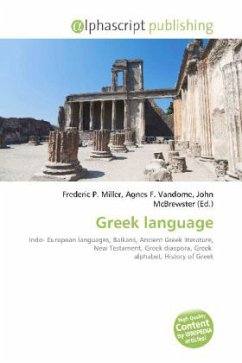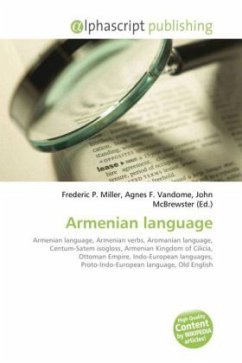
Mycenaean Greek Language
Versandkostenfrei!
Versandfertig in 6-10 Tagen
26,99 €
inkl. MwSt.

PAYBACK Punkte
13 °P sammeln!
High Quality Content by WIKIPEDIA articles! Mycenaean is the most ancient attested form of the Greek language, spoken on the Greek mainland and on Crete in the 16th to 12th centuries BC, before the hypothesised Dorian invasion which was often cited as the terminus post quem for the coming of the Greek language to Greece. The language is preserved in inscriptions in Linear B, a script first attested on Crete before the 14th century BC. Most instances of these inscriptions are on clay tablets found in Knossos in central Crete, and in Pylos in the southwest of the Peloponnese. Other tablets have ...
High Quality Content by WIKIPEDIA articles! Mycenaean is the most ancient attested form of the Greek language, spoken on the Greek mainland and on Crete in the 16th to 12th centuries BC, before the hypothesised Dorian invasion which was often cited as the terminus post quem for the coming of the Greek language to Greece. The language is preserved in inscriptions in Linear B, a script first attested on Crete before the 14th century BC. Most instances of these inscriptions are on clay tablets found in Knossos in central Crete, and in Pylos in the southwest of the Peloponnese. Other tablets have been found at Mycenae itself, Tiryns and Thebes and at Chania in Western Crete. The language is named after Mycenae, the most impressive of the Late Bronze Age palaces to be excavated which also gave its name to the civilization. The tablets remained long undeciphered, and every conceivable language was suggested for them, until Michael Ventris deciphered the script in 1952 and by a preponderance of evidence proved the language to be an early form of Greek. The texts on the tablets are mostly lists and inventories. No prose narrative survives, much less myth or poetry.












